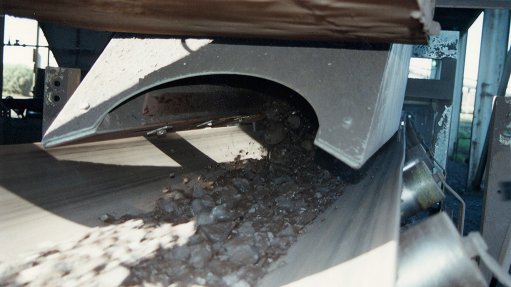
The uncontrolled discharge of bulk materials through conventional chutes is associated with escalated maintenance and replacement costs. By custom designing and engineering transfer points, productivity is enhanced and costs are reduced. A number of blue chip customers around the globe have adopted Weba Chute Systems to increase efficiencies and decrease downtime.
Mark Baller, managing director of Weba Chute Systems, says that optimised plant design should consider each element within the process flow. “Globally, companies accept that best practice includes the incorporation of transfer chutes that have been designed and engineered to suit the specific application. Unfortunately, many project houses do not afford transfer chutes the same importance as a screen, grizzly, crusher or feeder.
“Another area that needs clarification is the erroneous belief that mines can reduce capital costs by installing a cheaply fabricated chute. Ironically, these poorly constructed chutes incur unnecessary operational costs for the customer. The global mining community acknowledges that poor design and implementation of transfer points can result in increased maintenance costs for minerals processing systems. This fact belies the belief that chutes are just fabricated platework,” adds Baller.
“If due consideration is given to customisation at the design phase the customer will benefit from reduced maintenance requirements, improved transfer conditions, longer conveyor belt life and higher throughput. In addition, the Weba Chute Systems are designed in such a way that they minimise impact that traditionally sends clouds of dust into the air. This boosts occupational health and safety compliance,” Baller continues.
The Weba Chute Systems team of engineers has extensive experience in the field and a wealth of intellectual property. “Each project is approached on an individual basis, with engineers adopting a hands-on approach. Liaison with customers during the design phase allows us to devise tailor made solutions that provide a high-level return on investment,” says Baller.
“Unfortunately, when a poorly designed or conventional transfer chute fails we are forced to go in after the fact and redesign and re-engineer, not only the chutework but often we also have to reconfigure the entire transfer point. If the systems were correctly designed and engineered from the outset, then these issues would not arise,” adds Baller.
The Weba Chute Systems team utilises Discrete Element Modeling (DEM) simulations as a verification tool only. “Design ideas and concepts should be derived from the intellectual property that exists in our engineering team. By complementing our own sound engineering tools and substantial practical knowledge with DEM, we are able to provide customers with a high-end transfer chute solution.
“We are not competing with the project houses. It is not a draughtsman’s job to design chutes. These products require custom engineering to ensure that the transfer point solution precisely meets the specific parameters within a given application. Customer satisfaction can be measured in improved material flow, minimal maintenance and a substantial saving on costs,” Baller concludes.
UNCONTROLLED DISCHARGE PIC 01 : Individual Weba Chute Systems are configured to control the direction, flow and velocity of the calculated volume and type of material processed in a particular application.